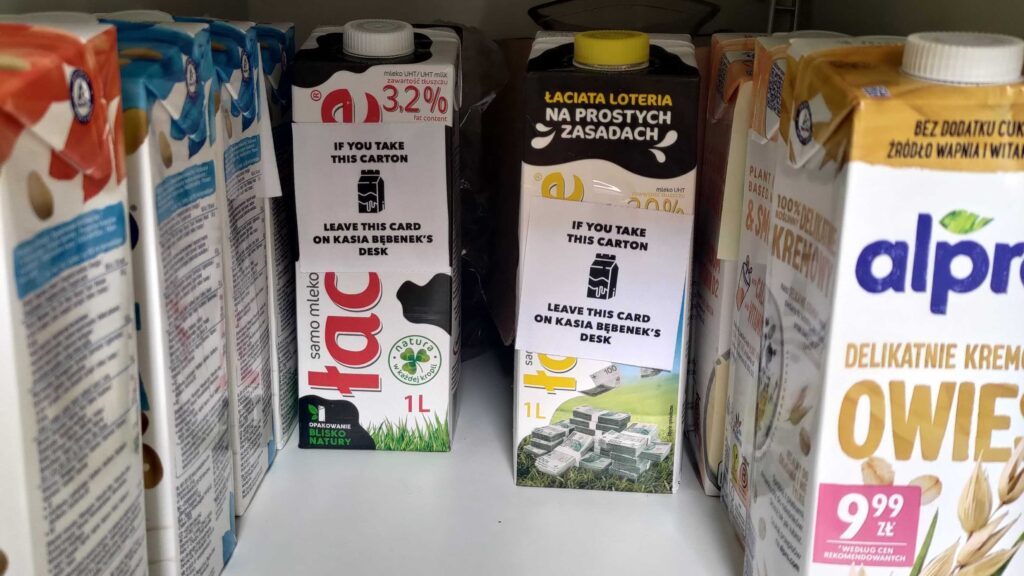When people say Kanban, they tend to think of a specific set of practices. Whiteboards & sticky notes (both almost universally virtual). Tasks moving through columns that represent workflow. Every now and then, WIP limits even.
As often as we do it with other things, it reduces a broader principle to a set of oversimplified techniques, which, in turn, tend to underdeliver in many contexts.
Kanban
In its original meaning, Kanban represented a visual signal. The thing that communicated, well, something. It might have been a need, option, availability, capacity, request, etc.
In our Kanban systems, the actual Kanban is a sticky note.
It represents work, and given its closest environment (board, columns, other stickies, visual decorators), it communicates what needs, or needs not, to be done.
If it’s yellow, it’s a regular feature. If there’s a blocker on it, it requests focus. If there’s a long queue of neighbors, it suggests flow inefficiency. If it’s a column named “ready for…” it communicates available work and/or handoff.
A visual signal all the way.
Visual Signals
Let’s decouple ourselves from the most standard Kanban board design. Let’s forget columns, sticky notes, and all that jazz.
Enters Kasia, our office manager at Lunar. One of the many things Kasia takes care of is making sure we don’t run out of kitchen supplies. The tricky part is that when you don’t drink milk yourself, it becomes a pain to check the cupboard with milk reserves every now and then to ensure we’re stocked.
Then, one day, I found this.

A simple index card taped to the last milk carton in a row stating, “Bring me to Kasia.” That’s it.
In the context, it really says that:
- we’re running out of (specific kind of) milk
- we want to restock soon
- there’s enough time to make an order (we don’t drink that much of cappuccinos and macchiatos)
But it’s just a visual signal. Kanban at its very core.
Simplicity is the King
What Kasia designed is a perfect Kanban system. It relies on visual signals, which are put in the context. Even better, unlike most Kanban boards I see across teams, the system is self-explanatory. Everything one needs to know is written on the index card.
That’s, by the way, another characteristic of a good Kanban system. It should be as simple as possible (but not simpler). Our workflow representations tend to get more and more complex over time by themselves; we don’t need to make them so from the outset.
It’s a safe assumption that, almost always, there’s a simpler visualization that would work just as well. We, process designers, often fall into the trap of overengineering our tools.
And it’s a healthy wake-up call when someone who knows close to nothing about our fancy stuff designs a system that we would unlikely think of. One that is a perfect implementation of the original spirit, even if it doesn’t follow any of the common techniques.
Because it’s all about principles, not practices.
That’s what we can learn from Milk Kanban.


Leave a Reply